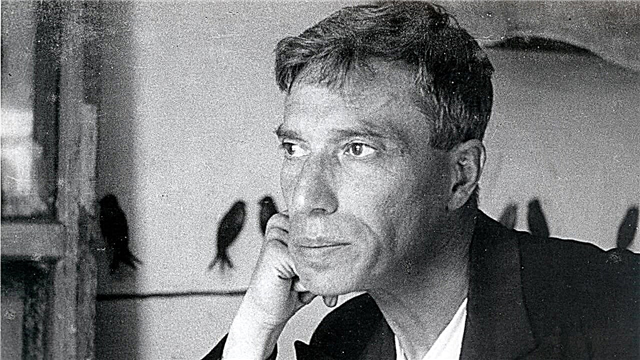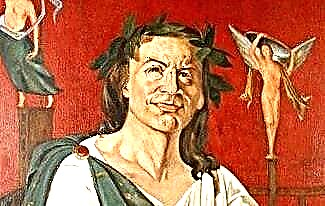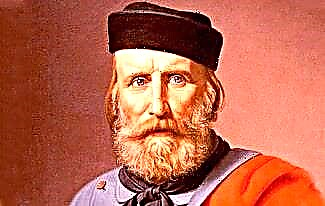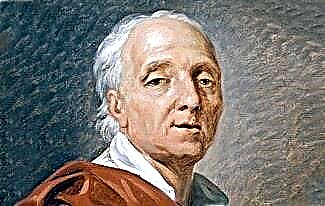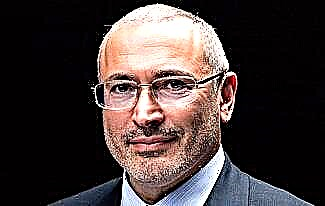In 1893, Swami Vivekananda, a wandering yogi, who promoted his teachings and Hinduism in general, spoke at the World Parliament of Religions in Chicago. It cannot be said that the West before Vivekananda was unfamiliar with Indian beliefs. Stories about fakirs and yogis, who perform real miracles, have been known in the Western world for 200 years already. And there was already an idea of Hinduism and yoga - even Arthur Schopenhauer wrote about them. However, before Vivekananda, yogis were treated as a distant and incomprehensible exotic.

Active popularization of yoga began with Vivekananda. Now tens of millions of people around the world are engaged in it. Yoga is considered both a miraculous body care tool and a teaching that can help you reach unprecedented spiritual heights. Yoga even penetrated into the pre-war Soviet Union, seemingly tightly sealed for any foreign pseudo-religious emissaries. For example, in the novel by I. Ilf and E. Petrov "12 chairs" the main character Ostap Bender has a poster of an Indian yogi in the arsenal of a swindler. Bender himself, having grown rich, attends a yogi touring the Soviet Union in Moscow - Bender wants to know the meaning of life.
The spiritual part played an important role in the promotion of yoga. Any traditional sport or physical education, with rare exceptions, outwardly seems like a thoughtless exertion. Let us recall football with the sacramental “22 men running after one ball”, boxing, scuffle, even running - this is a sinecure activity for idlers. In yoga, even a trivial emphasis on lying, as well as an attempt to take a standing position leaning only on the forehead, is a step towards enlightenment, towards gaining spiritual power.
In fact, modern yoga is nothing more than a set of physical exercises, albeit sometimes very difficult, that brings instructors and school owners a very good income. And it is not known if she was something more before. The tracts are lost, the inheritance is gone, the documents have not survived. There are legends about yogis who lived young for hundreds of years, descriptions of asanas in the interpretation of modern gurus. Not only that, over time it turned out that yoga classes can be very unsafe.
1. Researchers date the first evidence of yoga 2,500 BC. e. The dating is based on drawings in which "a horned figure, surrounded by animals, sits in a yogic pose." True, other researchers criticize such interpretations and attribute the date of the emergence of yoga closer to our time. In the III century BC. the Shvetashvatara Upanishad was written. This manual has already dealt with breath control, mind concentration, philosophy, etc. However, all this antiquity would have remained on the Indian subcontinent, if not for two bursts of interest in yoga.

This pose, if you have not yet understood, is a yoga class thousands of years ago.
2. The first surge of interest in yoga shook Europe in the 19th century when Schopenhauer mentioned it. The British, realizing that they had missed their own colony, rushed to research yoga in India, choosing darker nooks and dirtier street gurus. Considering that during this century in India reached the highest degree of enlightenment - died of hunger - about 40 million people, the interest of British scientists in yoga as a healthy lifestyle looks especially piquant. One way or another, the words “asana”, “prana” and “chakra” have become fashionable in Europe.

Such photos were difficult to use to promote yoga as a way to improve.
3. The second burst of popularity of yoga began in the 1950s and continues to this day. She was summoned by the stars of show business, who from jesters and buffoons suddenly turned into respected people. After World War II, young people lacked upbringing to understand and perceive traditional religions; philosophical concepts passed them by due to a lack of education. As a result, it turned out, as the classic sang, that "Hindus invented a good religion." Thick bibles and gospels can lie on the shelves - the guru will explain everything much shorter and more understandable. The doctrine of life extension was also very much in the subject - it is the well-established people above middle age who dream of extending life, who have money to pay for classes and the authority to promote yoga to the masses. Yoga began to spread in the countries of Western civilization like a wildfire.

Pop stars have played a significant role in the spread of yoga, starting with the Beatles
4. There is no clear definition of yoga. At most, we can say that this is a combination of practices, both physical and spiritual, aimed at spiritual and physical development. There are a lot of such practices, and it is impossible to determine which one is better or more correct. In case of any failure, the student himself will be to blame, not his mentor.
5. Yoga is a very serious business. In the USA, the income of the yoga industry exceeds $ 30 billion a year. Moreover, as always in America, profit is derived not only from paying for classes. Sportswear, shoes, paraphernalia, and even figures of people in various poses are produced and sold. In Russia, income from yoga is estimated at 45-50 billion rubles. Such large sums allow one to seriously invest in yoga propaganda. And in the United States, insurance companies are lobbying to pay for yoga classes. Independent researchers, of course, are right there: according to their data, yoga classes reduce hospital visits by 43%.

Classes at a yoga school in the USA. One lesson costs at least $ 25
6. According to statistics compiled by a group of scientists and students at the University of Alabama, led by Rick Swain, there are 17 serious injuries per 100,000 yoga practitioners per year. In total, Swain's group polls found that in the first 14 years of the 21st century, more than 30,000 Americans who practiced yoga were injured. Swain has a complimentary attitude towards yoga, but even he admits that yoga is useful only for generally healthy people. It is impossible to cure anything, let alone recover from an injury or illness, with the help of yoga exercises.
7. One of the most famous yogis, Ramakrishna Paramahamsa, died of throat cancer due to persistent sore throats at the age of 50. Other facts from his biography are no less instructive. As a child, he gained popularity among his peers, explaining to them that school teaches only to make money, and school knowledge does not lead to enlightenment. During the initiation ceremony called the Ceremony of Putting on the Sacred Cord, Ramakrishna desired to accept food from the hands of a lower caste woman, which was almost sacrilege. At a more mature age, the guru, along with an older brother, somehow convinced a rich woman to build a temple complex. Moreover, Ramakrishna's brother became the chief priest of this temple. The brother soon fell seriously ill and retired. Ramakrishna Paramahamsa took his place and after a while became so deeply enlightened that he married a 7-year-old girl, whom he named the Mother of the Universe. In a couple, as biographers write, there was a continuous divine relationship.
8. From the point of view of physical education, yoga is an occupation exclusively for absolutely healthy people. The fact that somewhere some people have excellent health due to some physical exercises does not mean at all that on the other side of the Earth people who repeat these exercises will also gain iron health. Lovers of analogies can be cited as an example with Caucasian centenarians. Their health, at first glance, is explained by healthy food. Lots of meat, herbs, unleavened bread, organic wine, etc. Sit on such a diet and live up to a hundred years. Alas, such a diet is unacceptable for a modern city dweller. It must be combined with water, air, traditional lifestyle and other factors. In the same way, yoga contains not only complex physical exercises, but also a spiritual part, and the control of energy flows. But most of the practitioners pay attention only to asanas. And they, generally speaking, are not too different from traditional physical gymnastics exercises.
9. During the period of English colonization, the yogis, sometimes called yogis, degraded from a warlike tribe living more like a racketeering guard of trade caravans, into outcasts who were forbidden to carry weapons and appear on the streets naked. In the 19th century, deprived of any other means of livelihood, yogis filled the streets of Indian cities, demonstrating amazing postures that they practiced in preparation for military hardships. Europeans and most Indians treated them as magicians at best, if not as crooks.

Nudity of yogis has always caused at least bewilderment among Europeans
10. The treatise "Hatha Yoga Pradipika" describes in great detail what steps must be taken and what stages must be overcome on the road to eternal youth and great enlightenment. According to the author of the treatise, enlightenment and youth can be achieved by swallowing strips of tissue and then removing them back, thereby cleansing the gastrointestinal tract. In addition, it is good to submerge in water up to the navel, after inserting a bamboo stick into the anus. There are several dozen such "exercises" in this and similar treatises. Modern yoga followers should be grateful to one of its main propagandists in the West, Krishnamacharya and his disciples. It was they who created the foundation of modern Western yoga, choosing from the supposedly ancient treatises the exercises most acceptable for mass distribution. So it is ridiculous to consider what yogis are now doing as some kind of millennial wisdom. This wisdom was created the oldest in the middle - late XIX century. The bulk of the yoga instructions are even younger.
11. One of the most famous and richest yoga masters, B.K.S.Iyengar, paved the way to Europe and big business by the outstanding violinist Yehudi Menuhin. He organized the first performances of Iyengar in Europe, after which he became a recognized guru. Iyengar has published several books that have become bestsellers, the number of his students is in the thousands. He is also known for breaking the spine of one of his most devoted students, Viktor van Kutten, in the process of opening his upper back.

B. Iyengar
12. In March 2019, American Rebecca Lee, who has been doing yoga since 1996 and blogging on Instagram, performed a difficult handstand after which she felt unwell. During the examination, it turned out that while doing the exercise, Rebecca damaged an artery that supplies blood to the brain, and she had a stroke. After the treatment, she felt better. Rebecca continued her yoga classes, but now she constantly feels tingling in her hand, suffers from severe migraines and cannot talk for a long time.

Rebecca Lee continues to practice yoga despite a stroke
13. Poet, occultist, black magician and Satanist Aleister Crowley practiced yoga under the name of Mahatma Guru Sri Paramahamsa Shivaji. According to other yoga fans, Crowley understood its essence quite well and knew quite a few asanas. He even wrote an essay on yoga called "Berashit" in which he described his attitude towards Raja Yoga.

Aleister Crowley worshiped more than Satan
14. “Sex Guru” Bhagavan Shri Radnish, better known as Osho, practiced group sex in addition to asanas and meditation. According to his teaching, a person should integrate sexuality and spirituality. Religions critical of free sex, Osho called "so-called religions", and he called sexual intercourse "dynamic meditation." Even his personal doctor after his dismissal, contrary to medical ethics, called Osho a sex maniac. Osho died in 1990 at the age of 58. The cause of death was heart failure. In addition, the sex guru suffered from asthma and diabetes.

Excesses, including sexual ones, did not bring Bhagavan Shri Radnish to any good
15. Doctors in the US are already using the yoga foot drop diagnosis. By this term, they call various injuries to the legs received during yoga. Most often this is all sorts of pinching of the nerves and tendons, occurring due to being in an unnatural position. In addition, yoga practitioners may experience circulatory problems in the brain due to the unnatural neck angles practiced in yoga. The vessels of the neck are simply not designed to bend to critical angles and cannot be trained. Schools about such injuries began to appear in European and American medical periodicals back in the 1970s, but so far yoga adepts have been able to attribute injuries to the shortcomings of individual practitioners.

